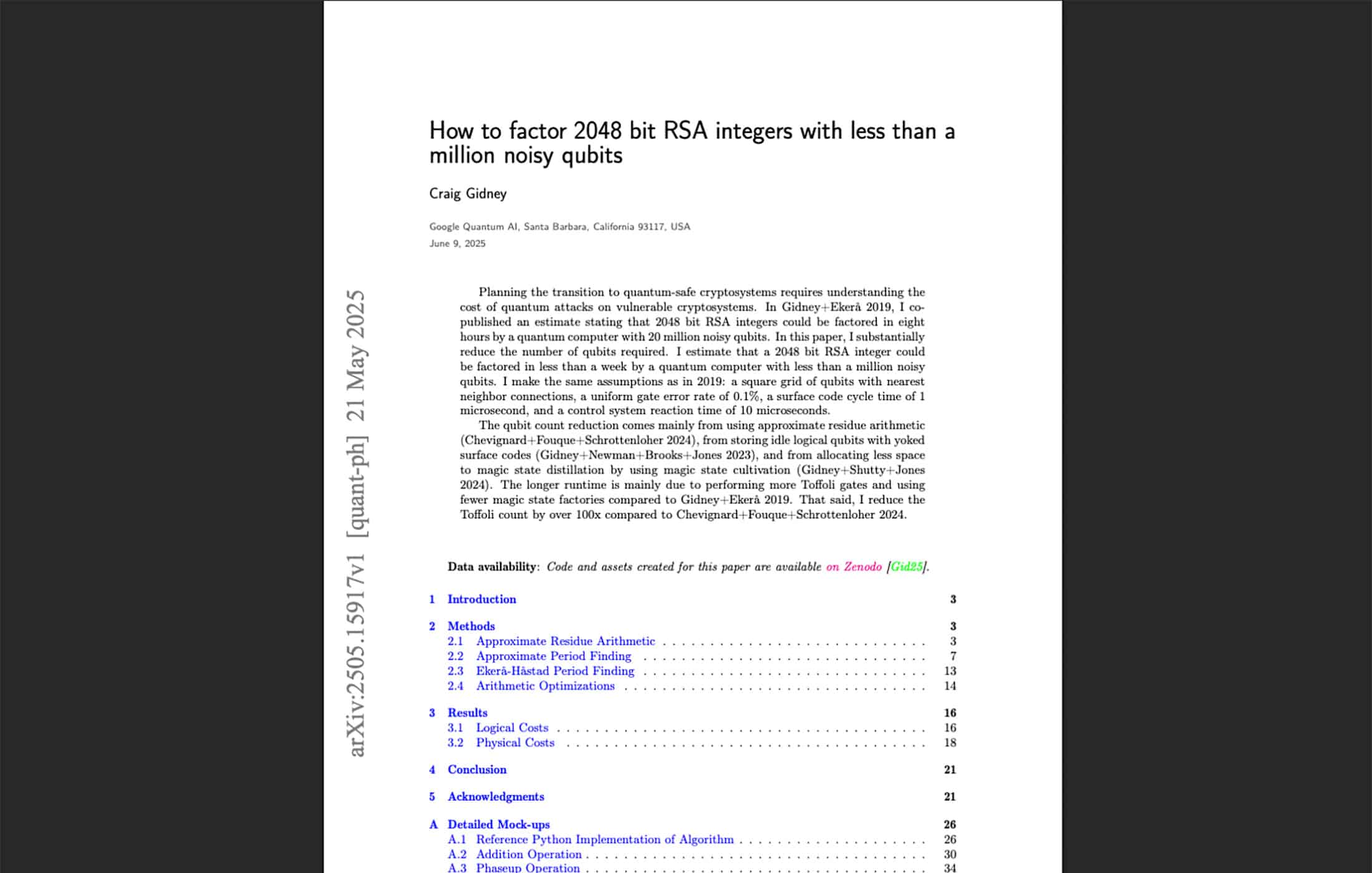Predicting 2031: Quantum Breakthrough Slashes Qubit Needs for RSA-2048 Factoring

Google researcher Craig Gidney published a paper that dramatically lowers the resources needed to break RSA-2048 encryption. The paper argues that a fault-tolerant quantum computer with under 1 million qubits could factor a 2048-bit RSA key in under a week – a stunning drop from Gidney’s own 2019 estimate of ~20 million qubits (which would factor RSA-2048 in about 8 hours). This 20× reduction in qubit requirements was achieved by new techniques that trade longer runtime for far fewer qubits, indicating major algorithmic and error-correction advances in quantum factoring.
For more information “Quantum Breakthrough Slashes Qubit Needs for RSA-2048 Factoring.”
The breakthrough comes from methods like approximate residue arithmetic (performing Shor’s algorithm using smaller quantum registers in pieces), more efficient storage of idle qubits via “yoked surface codes,” and a faster way to generate necessary resource states called magic state cultivation. These innovations allow qubits to be recycled and error-corrected more compactly, slashing the total qubit count without prohibitive slowdowns. The news garnered significant buzz in the tech media and cybersecurity community. Headlines noted the drop from 20 million to ~1 million qubits, suggesting that Q-Day – the day a quantum computer can crack present-day encryption – might arrive sooner than anticipated if hardware catches up. Gidney’s work is theoretical (a preprint, not an actual machine), but it underscores how quickly quantum algorithms are improving and adds urgency to move toward post-quantum cryptography.
Q-Day Impact: This development signals that the quantum decryption threat could materialize earlier than expected, as cutting the required qubit count to around a million brings the prospect of breaking RSA-2048 much closer to reality.
Quantum Upside & Quantum Risk - Handled
My company - Applied Quantum - helps governments, enterprises, and investors prepare for both the upside and the risk of quantum technologies. We deliver concise board and investor briefings; demystify quantum computing, sensing, and communications; craft national and corporate strategies to capture advantage; and turn plans into delivery. We help you mitigate the cquantum risk by executing crypto‑inventory, crypto‑agility implementation, PQC migration, and broader defenses against the quantum threat. We run vendor due diligence, proof‑of‑value pilots, standards and policy alignment, workforce training, and procurement support, then oversee implementation across your organization. Contact me if you want help.